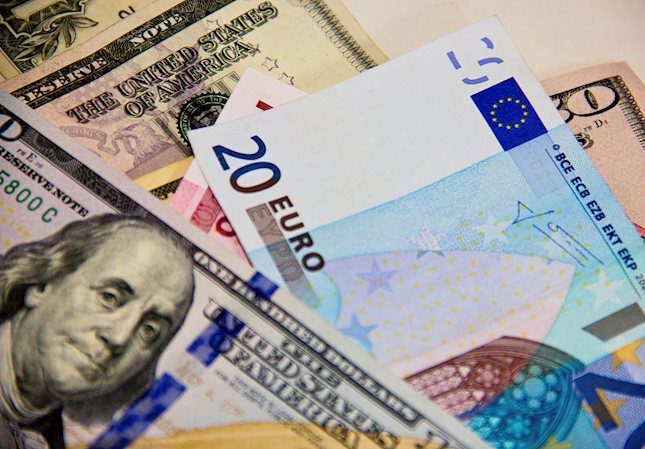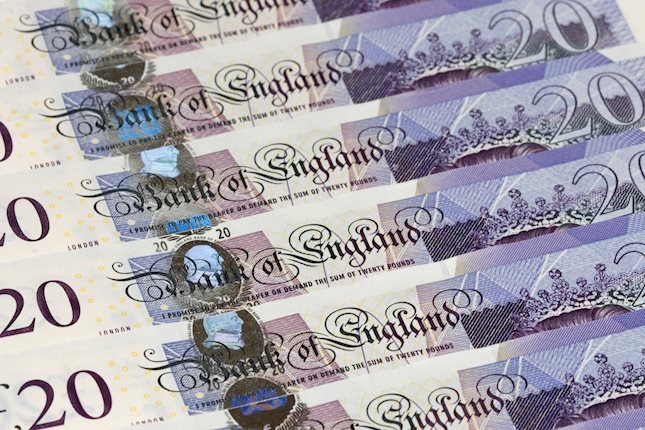- Gold price juggles below the $1,950.00 resistance as the focus shifts to the US Services PMI.
- US markets will remain closed on Monday on account of Labor Day.
- Cooling labor market conditions boost the Fed’s hopes of a soft landing.
Gold price (XAU/USD) traded back and forth from the past four trading sessions even though cooling labor market conditions boosted the Federal Reserve’s (Fed) soft landing hopes. A softening job market could mean that the Fed’s interest rate hike in July was the last one in the current policy tightening spell. The precious metal remains calm, but a power-pack action is expected after the release of the Services PMI data on Wednesday.
US markets will remain closed on Monday on account of the Labor Day holiday, so a lackluster performance is widely anticipated due to thin trading conditions. Going forward, investors hope that both price and the US Dollar can deliver gains as strength in the US Dollar would shift from the Fed’s tight policy to the vulnerable economic outlook of other G7 economies.
Daily Digest Market Movers: Gold price drops as US Dollar attempts recovery
- Gold price trades sideways below the $1,950.00 resistance even as cooling labor market conditions boost the Federal Reserve’s soft landing hopes.
- The precious metal delivered a volatile action after Friday’s Nonfarm Payrolls report for August but remains above the crucial support of $1,940.00.
- US employers added 187K new payrolls in August, higher than expectations of 170K and July's reading of 157K. The Unemployment Rate rose sharply to 3.8% against the consensus and the prior release of 3.5%.
- Cleveland Fed Bank President Loretta Mester said on Friday that demand and supply in the labor market is coming into a better balance but the job market is still strong. She further added that while job growth has slowed and job openings are down, the Unemployment Rate is low.
- Wage growth slowed in August as employees appear to be shifting their focus towards staying at one job rather than switching frequently.
- Average Hourly Earnings expanded at 0.2% on a monthly basis, a slower pace than the expected 0.3%. In July, earnings grew by 0.4%. On an annual basis, earnings growth decelerated to 4.3% against the consensus and the former print of 4.4%.
- Slower wage growth might cut the real income of households and weigh on consumer spending momentum. In July, both the headline and core monthly Personal Consumption Expenditure (PCE) Price Index grew at a steady pace.
- Investors hope that the US labor market will continue to cool down due to hefty interest rate hikes, prompting the Fed to keep interest rates unchanged for the remainder of the year.
- As per the CME Group Fedwatch Tool, as much as 93% of chances are in favor of steady interest rates in the September meeting. For the November meeting, the chances of an unchanged interest rate decision have increased to 62%.
- The US manufacturing sector seems to be stabilizing, but the PMI came in below the 50.0 mark, signaling a contraction in activity. The PMI increased to 47.6 in August from July’s reading of 46.4. The index has remained below the 50.0 threshold for 10 consecutive months.
- The US Dollar Index declined from a four-day high of 104.30 even though a cooling labor market boosted Fed pause bets.
- While the majority of economies are experiencing a vulnerable real estate sector, the US Commerce Department said on Friday that construction spending rose 0.7% as outlays on single-home projects rose due to limited supply.
- Investors should note that US markets will remain closed on Monday on account of Labor Day.
- This week, investors will keep focus on the ISM Services PMI for August, which will be published on Wednesday at 14:00 GMT. The PMI is expected to be broadly steady at 52.6.
- Developing economies could face the wrath of higher interest rates for a longer period as IMF First Deputy Managing Director Gita Gopinath expects that interest rates will remain higher for a quite long time.
- IMF Gopinath warned that external conditions had become more challenging for emerging markets due to rising geopolitical fragmentation, tightening financial conditions, and the growing costs of climate change.
Technical Analysis: Gold price skids below $1,940
Gold price continued to auction in the $1,934-$1,949 range for the past four trading sessions after a significant recovery. The precious metal stabilizes above the 20- and 50-day Exponential Moving Averages (EMAs), which indicates that the medium-trend has turned positive. The Relative Strength Index (RSI) (14) hovers around 60.0, A decisive break above this level will likely activate the bullish impulse.
Fed FAQs
What does the Federal Reserve do, how does it impact the US Dollar?
Monetary policy in the US is shaped by the Federal Reserve (Fed). The Fed has two mandates: to achieve price stability and foster full employment. Its primary tool to achieve these goals is by adjusting interest rates.
When prices are rising too quickly and inflation is above the Fed’s 2% target, it raises interest rates, increasing borrowing costs throughout the economy. This results in a stronger US Dollar (USD) as it makes the US a more attractive place for international investors to park their money.
When inflation falls below 2% or the Unemployment Rate is too high, the Fed may lower interest rates to encourage borrowing, which weighs on the Greenback.
How often does the Fed hold monetary policy meetings?
The Federal Reserve (Fed) holds eight policy meetings a year, where the Federal Open Market Committee (FOMC) assesses economic conditions and makes monetary policy decisions.
The FOMC is attended by twelve Fed officials – the seven members of the Board of Governors, the president of the Federal Reserve Bank of New York, and four of the remaining eleven regional Reserve Bank presidents, who serve one-year terms on a rotating basis.
What is Quantitative Easing (QE) and how does it impact USD?
In extreme situations, the Federal Reserve may resort to a policy named Quantitative Easing (QE). QE is the process by which the Fed substantially increases the flow of credit in a stuck financial system.
It is a non-standard policy measure used during crises or when inflation is extremely low. It was the Fed’s weapon of choice during the Great Financial Crisis in 2008. It involves the Fed printing more Dollars and using them to buy high grade bonds from financial institutions. QE usually weakens the US Dollar.
What is Quantitative Tightening (QT) and how does it impact the US Dollar?
Quantitative tightening (QT) is the reverse process of QE, whereby the Federal Reserve stops buying bonds from financial institutions and does not reinvest the principal from the bonds it holds maturing, to purchase new bonds. It is usually positive for the value of the US Dollar.
Information on these pages contains forward-looking statements that involve risks and uncertainties. Markets and instruments profiled on this page are for informational purposes only and should not in any way come across as a recommendation to buy or sell in these assets. You should do your own thorough research before making any investment decisions. FXStreet does not in any way guarantee that this information is free from mistakes, errors, or material misstatements. It also does not guarantee that this information is of a timely nature. Investing in Open Markets involves a great deal of risk, including the loss of all or a portion of your investment, as well as emotional distress. All risks, losses and costs associated with investing, including total loss of principal, are your responsibility. The views and opinions expressed in this article are those of the authors and do not necessarily reflect the official policy or position of FXStreet nor its advertisers. The author will not be held responsible for information that is found at the end of links posted on this page.
If not otherwise explicitly mentioned in the body of the article, at the time of writing, the author has no position in any stock mentioned in this article and no business relationship with any company mentioned. The author has not received compensation for writing this article, other than from FXStreet.
FXStreet and the author do not provide personalized recommendations. The author makes no representations as to the accuracy, completeness, or suitability of this information. FXStreet and the author will not be liable for any errors, omissions or any losses, injuries or damages arising from this information and its display or use. Errors and omissions excepted.
The author and FXStreet are not registered investment advisors and nothing in this article is intended to be investment advice.
Recommended content
Editors’ Picks

EUR/USD climbs above 1.0350 ahead of German inflation data
EUR/USD gathers recovery momentum and trades above 1.0350 in the European session after the data from Germany and the Eurozone showed that Services PMI figures for December were revised higher. Investors await German inflation report.

GBP/USD extends rebound toward 1.2500 on broad USD weakness
GBP/USD extends its recovery from the multi-month low it set in the previous week and closes in on 1.2500. The improving risk mood makes it difficult for the US Dollar (USD) to find demand on Monday and helps the pair push higher ahead of mid-tier US data releases.

Gold price keeps the red near 100-day SMA despite modest USD weakness
Gold price (XAU/USD) turns lower for the second straight day following an intraday uptick to the $2,647-2,648 area on Monday and moves further away from a nearly three-week high touched on Friday.

Five fundamentals for the week: Nonfarm Payrolls to keep traders on edge in first full week of 2025 Premium
Did the US economy enjoy a strong finish to 2024? That is the question in the first full week of trading in 2025. The all-important Nonfarm Payrolls (NFP) stand out, but a look at the Federal Reserve (Fed) and the Chinese economy is also of interest.

The week ahead: Three things to watch
Analysts believe that American exceptionalism will persist in 2025, and the first trading week of the year would suggest that investors are also betting on another strong year for the US.

Best Forex Brokers with Low Spreads
VERIFIED Low spreads are crucial for reducing trading costs. Explore top Forex brokers offering competitive spreads and high leverage. Compare options for EUR/USD, GBP/USD, USD/JPY, and Gold.